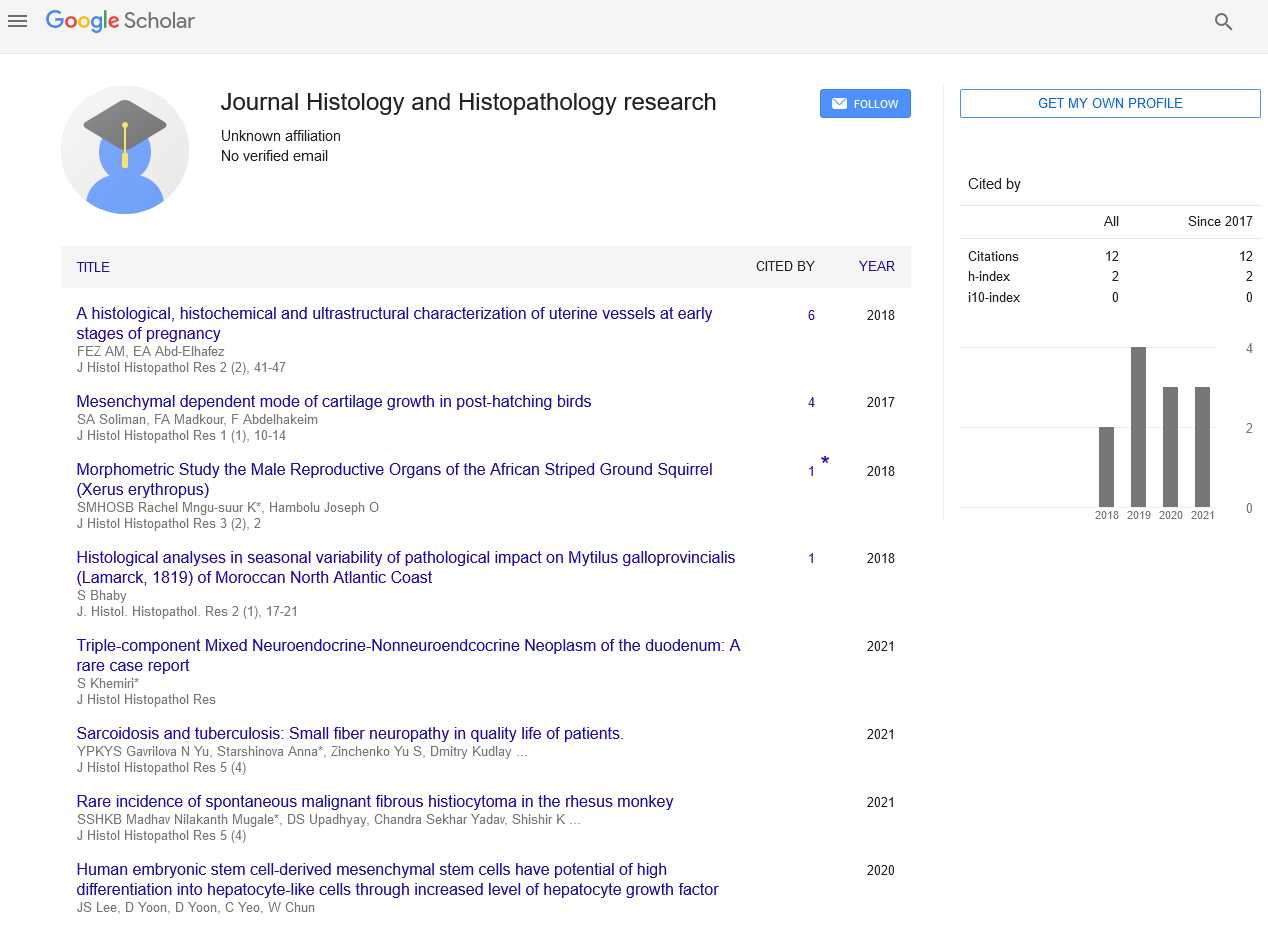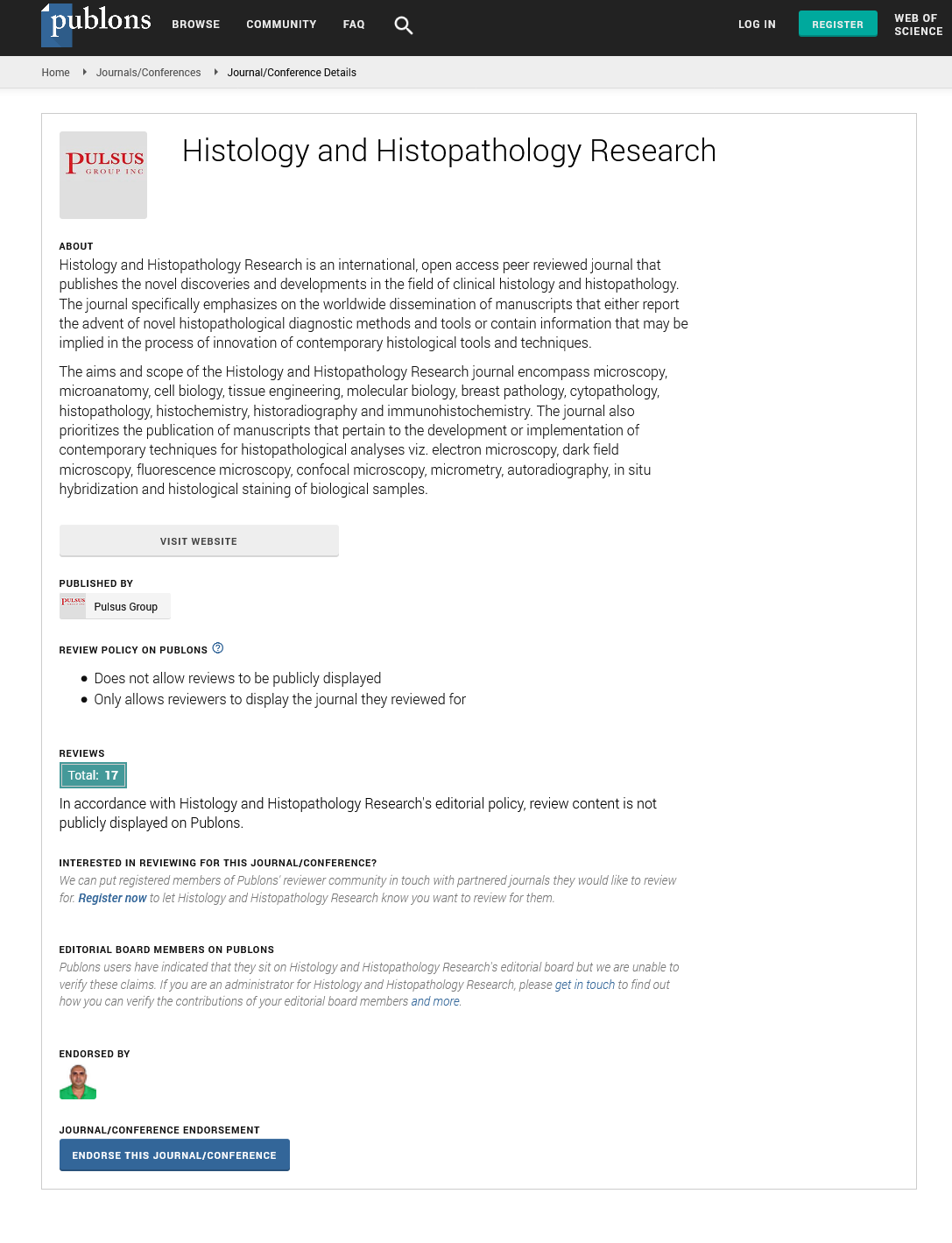A brief note on role of cytoskeleton
Received: 16-Sep-2021 Accepted Date: Sep 30, 2021; Published: 07-Oct-2021
Citation: Munoz Q. A brief note on role of cytoskeleton. J Histol Histopathol 2021;5(3):1.
This open-access article is distributed under the terms of the Creative Commons Attribution Non-Commercial License (CC BY-NC) (http://creativecommons.org/licenses/by-nc/4.0/), which permits reuse, distribution and reproduction of the article, provided that the original work is properly cited and the reuse is restricted to noncommercial purposes. For commercial reuse, contact reprints@pulsus.com
About the Study
All cells, including bacteria and archaea, get a cytoskeleton, that is a complex, dynamic network of interlinking protein filaments located in their cytoplasm. It runs from the cell nucleus to the cell membrane in all organisms and is composed of identical proteins. Microfilaments, intermediate filaments, and microtubules, all of which are capable of fast growth or disassembly depending on the cell's needs.
All cells, including bacteria and archaea, get a cytoskeleton, that is a complex, dynamic network of interlinking protein filaments located in their cytoplasm. It runs from the cell nucleus to the cell membrane in all organisms and is composed of identical proteins. Microfilaments, intermediate filaments, and microtubules, all of which are capable of fast growth or disassembly depending on the cell's needs.
The movement of vesicles and organelles within a cell) and can serve as a basis for the building of a cell wall. It can also produce special structures including flagella, cilia, lamellipodia, and system. It describes. Depending on the organism and cell type, the cytoskeleton's structure, function, and dynamic activity can be very different.
Muscle contraction is an example of a large-scale action performed by the cytoskeleton. This is accomplished by the cooperation of groups of specialized cells. Myosin molecular motors together apply forces on parallel actin filaments within each muscle cell during muscular contraction. Muscle contraction is produced by nerve impulses, which generate increased calcium release from the sarcoplasmic reticulum. With the help of two proteins, tropomyosin and troponin, increases in calcium in the cytosol, muscle contraction can begin. Tropomyosin prevents actin and myosin from interacting, while troponin identifies an increase in calcium and reverses the inhibition.
Microfilaments, microtubules, and intermediate filaments are the three types of cytoskeletal filaments eukaryotes. Neurofilaments are intermediate filaments found in neurons. Each kind is made up of a certain type of protein component and has its own structure and intracellular distribution. Microfilaments are actin polymers with a diameter of 7 nanometers. Intermediate filaments are 8-12 nm in diameter and made up of a variety of proteins, depending on the type of cell in which they are found.
The cytoskeleton cell wall provides structure and shape, and also adds to the level of macromolecular crowding in this compartment by preventing macromolecules from some of the cytoplasm.The cytoskeleton appears to be affected in neurodegenerative disorders such as Parkinson's disease, Alzheimer's disease, Huntington's disease, and amyotrophic lateral sclerosis (ALS), as according research.
Tremors, rigidity, and other non-motor symptoms are all symptoms of Parkinson's disease, which is characterized by the destruction of neurons. In Alzheimer's disease, tau proteins that maintain microtubules malfunction as the disease advances, causing cytoskeleton pathology. Excess glutamine in the Huntington protein, which is important in attaching vesicles to the cytoskeleton, is also thought to have a role in the progression of Huntington's disease. Amyotrophic Lateral Sclerosis (ALS) is a disease that causes loss of mobility due to the degradation of motor neurons. A number of small-molecule cytoskeletal medicines that interact with actin and microtubules have been found. Several of these chemicals have clinical applications and have been used to examine the cytoskeleton. They also serve as pathways for myosin molecules, which attach to the microfilament and "walk" along it. Actin is the main component or protein of microfilaments in general. The monomer of G-actin joins together to form a polymer, which continues to form the microfilament (actin filament). These subunits subsequently combine to form two chains that overlap to form Factin chains.
In muscle and most non-muscle cell types, myosin motoring along F-actin filaments generates contractile forces in so-called actomyosin fiber. Rho family of tiny GTP-binding proteins regulates actin structures, including Rho for contractile acto-myosin filaments ("stress fiber"), Rac for lamellipodia, and Cdc42 for filopodia. Many eukaryotic cells contain intermediate filaments in their cytoskeleton. They, like actin filaments, help to keep cells in form by bearing tension (microtubules, by contrast, resist compression but can also bear tension during mitosis and during the positioning of the centrosome). Intermediate filaments anchor organelles and serve as structural components of the nuclear lamina, serving to organise the cell's internal tridimensional structure.
Septins are a group of GTP-binding proteins identified in eukaryotes that are highly conserved. Septins bind with one another to form protein complexes. These can be joined together to form filaments and rings. As a result, septins can be considered cytoskeleton components. Septins have two functions in the cell: they serve as a confined attachment site for other proteins and they restrict certain molecules from flowing from one cell compartment to another. They construct scaffolding in yeast cells to provide structural support and separate portions of the cell during cell division.






